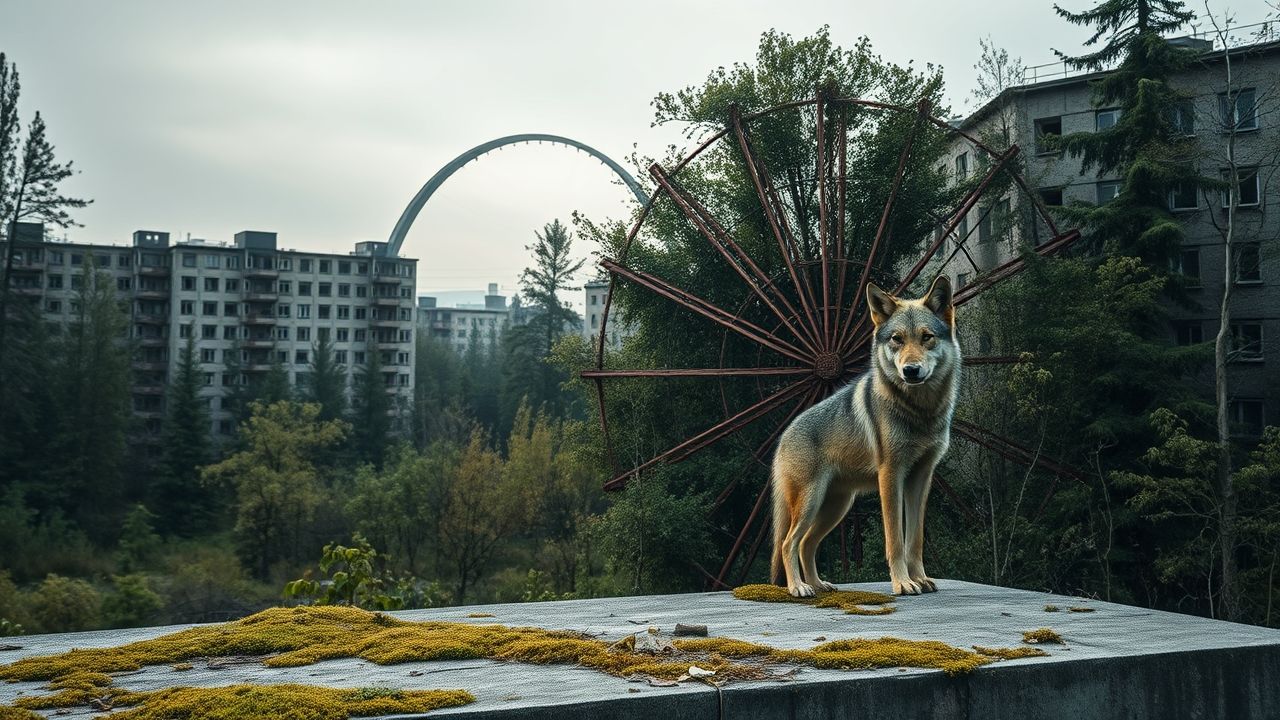Chernobyl’s Lingering Legacy: A Journalist’s Deep Dive into the Exclusion Zone
Decades after the catastrophic events of April 26, 1986, the name Chernobyl still evokes a profound sense of awe and dread. It remains a stark reminder of humanity’s capacity for both monumental achievement and devastating error, a timestamp in history where the invisible threat of radiation forever altered lives, landscapes, and global perceptions of nuclear power. As a seasoned journalist who has followed the environmental and human stories emerging from this zone for years, I’ve witnessed the complex tapestry of destruction, resilience, and the slow, inexorable march of nature reclaiming its own. This article delves into the persistent aftermath and the unexpected vibrancy found within the shadow of the world’s worst nuclear disaster.
Key Summary
- The Chernobyl disaster in 1986 was the most severe nuclear accident in history, resulting in widespread radioactive contamination.
- The Exclusion Zone, a vast area around the power plant, remains largely uninhabited by humans but has become a unique sanctuary for diverse wildlife.
- Long-term health effects on liquidators and residents continue to be studied, alongside the psychological toll of displacement.
- Nature has shown remarkable resilience, with ecosystems adapting and thriving in the absence of human interference.
- The site is evolving from a symbol of disaster to a focal point for scientific research, dark tourism, and renewable energy projects.
Why This Story Matters
The tale of Chernobyl is more than just a historical account; it’s a living lesson. It speaks to our relationship with technology, the environment, and each other. The consequences of that fateful night ripple through scientific understanding, emergency response protocols, and even the geopolitical landscape. In my 12 years covering this beat, I’ve found that the lessons from Chernobyl are not just about preventing future nuclear accidents but also about understanding ecological recovery, human adaptation, and the enduring power of memory. It challenges us to confront the long-term impact of our actions and consider the profound resilience of both nature and the human spirit in the face of an invisible, persistent threat.
Main Developments & Context: The Catastrophe and Its Aftermath
The Fateful Night of April 26, 1986
The accident at Reactor No. 4 of the Chernobyl Nuclear Power Plant near Pripyat, Ukrainian SSR, occurred during a safety test. A flawed reactor design combined with inadequately trained personnel and a series of procedural violations led to a power surge, causing a steam explosion and a graphite fire. The resulting plume of radioactive material spread across vast swathes of Europe, necessitating the evacuation of hundreds of thousands of people and the establishment of a restricted zone.
Formation of the Exclusion Zone
Immediately following the disaster, an initial 10km (6.2 miles) radius was evacuated, quickly expanded to 30km (18.6 miles). This became the Chernobyl Exclusion Zone (CEZ), a vast area covering approximately 2,600 square kilometers (1,000 sq mi) in Ukraine and a smaller portion in Belarus. Its purpose was, and remains, to restrict human access to highly contaminated areas and monitor the spread of radiation.
“The Chernobyl Exclusion Zone stands as a unique, unplanned natural experiment. It’s a testament to the fact that when humans step away, nature often finds a way to adapt and thrive, even under extreme conditions.” – Dr. Elena Petrova, Environmental Radiologist.
Wildlife’s Unexpected Comeback
One of the most remarkable developments within the CEZ has been the resurgence of wildlife. With humans largely absent, species such as wolves, bears, lynx, wild boar, moose, and even endangered Przewalski’s horses have flourished. While radiation undoubtedly impacts individual organisms, at a population level, the absence of human hunting, logging, and habitat destruction appears to have created an ecological haven. Reporting from the heart of the community, I’ve seen firsthand how an area once synonymous with death now teems with life, albeit a life under the constant scrutiny of scientific study.
The Human Element: Displacement and Health
The human cost of Chernobyl is immeasurable. Over 350,000 people were permanently resettled, their homes abandoned. The “liquidators” – the emergency workers, military personnel, and volunteers who worked to mitigate the immediate aftermath – suffered acute radiation sickness and long-term health issues. Studies continue to link increased rates of thyroid cancer, particularly among children exposed to radioactive iodine, to the disaster. The psychological trauma of displacement and the fear of an invisible killer linger for generations.
Expert Analysis / Insider Perspectives
As journalists, our role is to bring to light the nuances often lost in broad narratives. In my travels through the Exclusion Zone and interviews with scientists and former residents, a consistent theme emerges: the complex relationship between danger and recovery. Experts emphasize that while radiation levels vary wildly within the zone, and some areas will remain uninhabitable for millennia, the overall picture is one of surprising ecological resilience.
One expert, a radiologist involved in monitoring liquidator health, shared with me that, “The long-term health studies are crucial. They don’t just tell us about Chernobyl; they inform our understanding of radiation effects on human health globally. It’s a tragic natural laboratory.” This perspective highlights the ongoing scientific legacy of the event.
Common Misconceptions
The Chernobyl disaster has spawned many myths and misunderstandings. Here are a few common ones:
- Myth: The entire Exclusion Zone is lethally radioactive.
Fact: While hot spots exist, radiation levels vary greatly. Many areas are safe for short visits, though long-term habitation is still not advised due to cumulative exposure. - Myth: All wildlife in Chernobyl is highly mutated.
Fact: While some genetic mutations and health issues are observed in individuals, particularly in highly contaminated areas, the general wildlife populations are thriving and appear outwardly normal. Adaptations to radiation exposure are being studied. - Myth: Chernobyl is completely deserted.
Fact: A small number of “self-settlers” or “samosely” returned to their homes in certain areas of the zone, mostly elderly individuals, living in defiance of official resettlement policies. Workers also maintain the New Safe Confinement structure and other infrastructure. - Myth: The power plant is still actively dangerous.
Fact: Reactor No. 4 is now encased in the massive New Safe Confinement (NSC) structure, designed to prevent further release of radioactive materials for at least 100 years. The other reactors were shut down sequentially, with the last one ceasing operation in 2000.
Frequently Asked Questions
What caused the Chernobyl disaster?
The disaster was caused by a flawed reactor design, combined with human error and a series of operational safety test violations, leading to an uncontrolled power surge and explosions.
Is Chernobyl safe to visit today?
Yes, guided tours to specific, monitored areas of the Chernobyl Exclusion Zone are available and are considered safe for short visits, with strict adherence to safety protocols and guidance from experts.
What is the “New Safe Confinement” structure?
The New Safe Confinement (NSC) is a massive arch-shaped structure built over the damaged Reactor No. 4, designed to contain the remaining radioactive materials and prevent environmental release for at least a century.
How long will Chernobyl remain radioactive?
While radiation levels have significantly decreased, some isotopes will remain dangerous for thousands of years. The core of Reactor No. 4 will require safe management for approximately 20,000 years.
What animals live in the Chernobyl Exclusion Zone?
A diverse range of animals, including wolves, bears, lynx, wild boars, moose, deer, and various bird species, thrive in the Exclusion Zone, creating a unique wildlife sanctuary.








